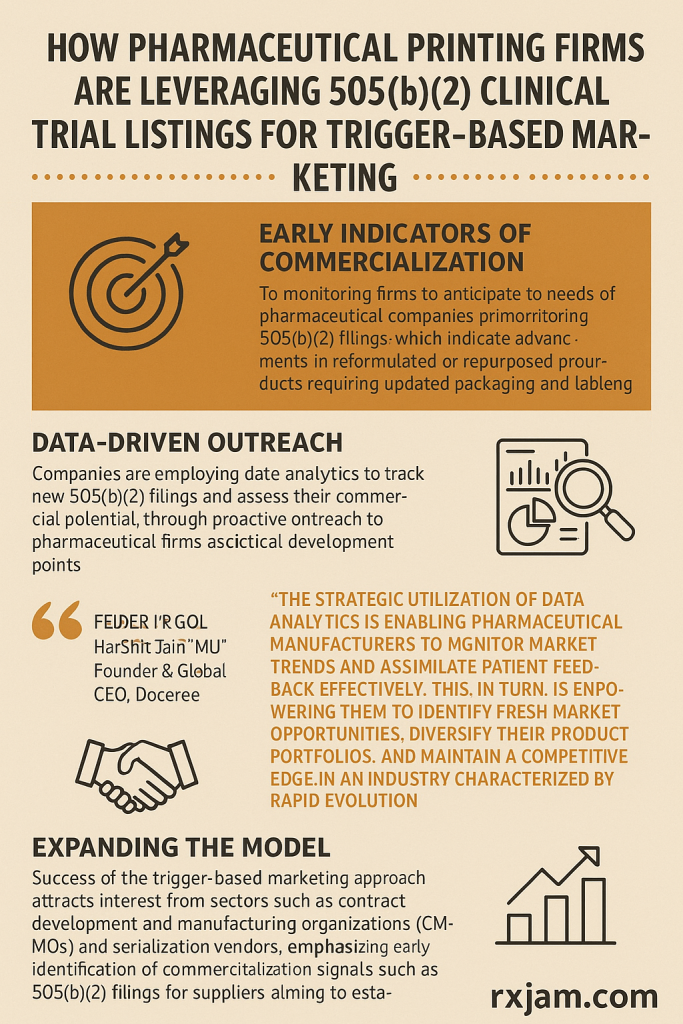In the evolving landscape of pharmaceutical marketing, printing and packaging companies are tapping into the FDA’s 505(b)(2) application pathway to identify early opportunities for business development.
The 505(b)(2) pathway allows drug developers to seek approval for new formulations or combinations of existing drugs, relying in part on existing clinical data. This streamlined process not only accelerates time to market but also signals impending commercialization activities—particularly in labeling and packaging.

Early Indicators of Commercialization
By monitoring 505(b)(2) clinical trial listings, printing firms can anticipate the needs of pharmaceutical companies preparing for product launches. These listings often indicate that a drug developer is advancing a reformulated or repurposed product, necessitating updated packaging and labeling solutions.
Data-Driven Outreach
Companies are employing data analytics to track new 505(b)(2) filings and assess their commercial potential. This approach enables targeted outreach to pharmaceutical firms at critical junctures in their development timelines.
Harshit Jain, MD, Founder & Global CEO of Doceree, emphasizes the importance of real-time targeting in pharmaceutical marketing: “The strategic utilization of data analytics is enabling pharmaceutical manufacturers to monitor market trends and assimilate patient feedback effectively. This, in turn, is empowering them to identify fresh market opportunities, diversify their product portfolios, and maintain a competitive edge in an industry characterized by rapid evolution” .PharmExec
Consultative Partnerships
Beyond traditional printing services, firms are positioning themselves as consultative partners, offering expertise in regulatory compliance and sustainable packaging options. This proactive engagement allows them to assist pharmaceutical companies in navigating the complexities of FDA labeling requirements associated with the 505(b)(2) pathway.
Expanding the Model
The success of this trigger-based marketing approach is attracting interest from other sectors, including contract development and manufacturing organizations (CDMOs) and serialization vendors. As the pharmaceutical industry continues to evolve, early identification of commercialization signals like 505(b)(2) filings will be crucial for suppliers aiming to establish themselves as integral partners in the drug development process.